Key Takeaways
1. Strategy is a genuine revolution, transforming how companies think and compete.
But the rise of strategy qualifies as the genuine, consciousness-transforming article.
Beyond common sense. Before the 1960s, business was often seen as common sense or simple planning. The strategy revolution introduced a new intellectual framework for understanding and organizing corporate efforts, fundamentally changing how companies perceived themselves and their environment. It wasn't just about new products, but new ways of thinking about the business itself.
A response to change. The revolution was spurred by forces like deregulation, new technologies, freer capital markets, and globalization. These "Four Horsemen of the Corporate Apocalypse" extended competition into previously protected areas, forcing companies to become acutely aware of rivals and the need for competitive advantage. Strategy became the essential lens for navigating this increasingly fierce landscape.
Ideas with purpose. Unlike abstract intellectual pursuits, the ideas driving strategy were sharp with purpose – solving real problems faced by companies. This practical application, often spearheaded by consultants, demonstrated the power of concepts to change corporate behavior and performance, shaping the economy we live in today.
2. Bruce Henderson and BCG pioneered strategy by focusing on competition and data.
He was, instead, obsessed with figuring out how the world works.
A maverick founder. Bruce Henderson, despite being fired from previous jobs, founded the Boston Consulting Group in 1963, launching the corporate-strategy revolution. He was an intellectual as corporate warrior, driven by a restless curiosity to understand the principles of competition and how companies achieve advantage.
Early insights. Henderson's early experiences, like comparing Westinghouse's costs to Leland Electric's, revealed that companies in the same business could have vastly different cost structures. This challenged prevailing assumptions and highlighted the importance of understanding relative costs and market position.
Marketing ideas. BCG distinguished itself by marketing its ideas, not just its services. Through "Perspectives" essays and invitation-only conferences, Henderson and his colleagues disseminated provocative concepts, building their reputation on intellectual drawing power rather than just history or senior partners' expertise.
3. The Experience Curve revealed predictable cost declines and the power of market share.
The experience curve was, simply, the single most important concept in launching the strategy revolution.
Systematic cost reduction. BCG's experience curve, building on the learning curve concept, posited that a company's total costs (including capital, admin, R&D) should decline predictably with accumulated experience (total units produced). This was a shock to many who saw costs as fixed.
Market share advantage. Crucially, BCG linked the experience curve to market share: the competitor with the largest cumulative share should have the most experience and thus the lowest costs. This implied that market leaders could maintain a perpetual cost and price advantage, forcing others to "get big or get trounced."
Wake-up call. The experience curve instilled an "ever-edgy awareness" of competition. It provided a dynamic tool to understand competitive dynamics, predict price declines, and justify aggressive pricing strategies to gain share, fundamentally altering corporate consciousness about costs and rivals.
4. The Growth-Share Matrix provided a framework for managing diversified businesses.
With the invention of the growth-share matrix, the process had begun whereby strategy strengthened top management, or what’s sometimes called the corporate center, at the expense of the unit heads.
Portfolio view. As companies diversified, often haphazardly due to antitrust laws and tax policies, they struggled to manage disparate businesses. The growth-share matrix offered a simple, visual framework to categorize businesses based on market growth rate and relative market share.
Cash flow logic. The matrix linked competitive position to cash flow needs:
- Stars: High share, high growth (need investment)
- Cash Cows: High share, low growth (generate cash)
- Question Marks: Low share, high growth (uncertain, need decision)
- Dogs: Low share, low growth (drain resources, divest candidates)
Empowering the center. This tool empowered corporate headquarters to make strategic decisions about resource allocation across the portfolio, providing a rigorous basis to challenge divisional managers and justify divestitures or aggressive investment in high-potential areas.
5. Bill Bain built a firm focused relentlessly on client results and implementation.
Do our clients make any more money because of us?
Beyond reports. Bill Bain, an early BCG star, grew frustrated with the firm's project-based approach and lack of focus on whether recommendations actually led to client success. He founded Bain & Company in 1973 with a core question: "Do our clients make any more money because of us?"
Results-oriented model. Bain & Company pioneered a model of deep, long-term client relationships, often working exclusively with one company per industry. They embedded consultants within client operations, focusing on implementation and measurable results, particularly cost reduction and stock price appreciation. Their mantra was "We don't sell advice by the hour; we sell profits at a discount."
Greater Taylorism perfected. While BCG provided the intellectual foundation for Greater Taylorism (applying analytics to entire corporate functions), Bain excelled at its practical application. They conducted "excruciatingly detailed competitive-cost analysis" and developed sophisticated benchmarking techniques to drive efficiency and competitive advantage at the activity level.
6. McKinsey, the established giant, was forced to embrace strategy and build knowledge.
McKinsey espouses and, at its best, puts into practice a principle it calls the democracy of ideas.
Waking up. McKinsey & Company, the preeminent consulting firm, initially lagged behind BCG and Bain in embracing modern strategy. Its traditional focus on organizational structure and general management surveys left it vulnerable to the upstarts' analytical rigor and competitive focus.
Internal revolution. Under managing director Ron Daniel and strategy practice head Fred Gluck, McKinsey launched an internal effort to build expertise in strategy. They systematically gathered knowledge from consultants, debated ideas in seminars, and began producing staff papers to disseminate concepts, fostering a "knowledge culture."
Strategy as management. McKinsey's approach often framed strategy within the context of "strategic management," emphasizing the link between strategy, planning, organization, and execution. While perhaps less analytically sharp than BCG or Bain initially, their embrace of strategy legitimized the field and positioned them as the leading strategy firm by the late 1970s.
7. Michael Porter brought academic rigor with frameworks like the Five Forces and Value Chain.
What I’ve come to see as probably my greatest gift is the ability to take an extraordinary complex, integrated, multidimensional problem and get arms around it conceptually in a way that helps, that informs and empowers practitioners to actually do things.
Bridging economics and business. Michael Porter, trained in industrial organization economics, brought unprecedented academic rigor to strategy. He "turned on its head" the IO focus on why industries aren't competitive, instead analyzing structural factors that create opportunities for competitive advantage.
Defining frameworks. His key contributions include:
- Five Forces: Analyzing industry profitability based on rivalry, buyer/supplier power, and threats of entry/substitutes.
- Generic Strategies: Identifying three fundamental approaches: cost leadership, differentiation, and focus.
- Value Chain: Breaking down a company's activities to identify sources of cost and value advantage.
Transforming business education. Porter's work, particularly his popular "Industry and Competitive Analysis" course and best-selling books, revolutionized business school curricula. He provided analytical frameworks and "takeaways" that empowered managers to systematically analyze competitive situations, making strategy a central discipline in management education.
8. The "Human Stain" challenged rational strategy, highlighting people and culture.
What got repressed—sometimes viciously repressed—by the strategy-concept makers, consultants, and data gatherers was a consciousness of people and their importance in the creation and execution of any strategy.
Beyond the numbers. While strategy focused on quantifiable factors like costs, market share, and industry structure, critics argued it neglected the human element – the people who execute strategy and the organizational culture that shapes behavior.
The Excellence movement. Tom Peters and Bob Waterman's "In Search of Excellence" highlighted the importance of organizational habits and culture ("productivity through people," "bias for action") in driving success, suggesting that how a company managed itself mattered more than its strategic position.
Strategy as learning. Richard Pascale's "Honda effect" story illustrated how strategy could emerge from "miscalculation, serendipity, and organizational learning" rather than being a purely rational, top-down design. This challenged the positioning school and emphasized adaptation and responsiveness.
9. Shareholder value emerged as strategy's dominant, fiercening purpose.
this ever since strategy helped the world discover that the only real purpose of a company is to rack up gains for shareholders.
A new imperative. Starting in the 1980s, fueled by a rising stock market, junk bonds, and the leveraged buyout movement, shareholder wealth maximization became the primary goal of corporate strategy. This was a shift from earlier notions that companies served multiple stakeholders.
Market for control. The threat of hostile takeovers and the rise of LBO firms forced companies to focus on increasing their stock price. These financial players used strategy's tenets – portfolio restructuring, debt leverage, cost cutting – to unlock value, often more ruthlessly than incumbent management.
Greater Taylorism's triumph. Value-based management firms reinforced this focus, arguing that companies should be managed based on economic profit (value created beyond the cost of capital) and that managers' compensation should be tied to it. This intensified the drive for efficiency and cost reduction, solidifying Greater Taylorism's place at the heart of strategy execution.
10. Strategy shifted focus to processes and capabilities in the face of fleeting advantage.
In this new environment, the essence of strategy is not the structure of a company’s position in products and markets, but the dynamics of its behaviors.
Beyond positioning. As competitive advantages based on market position or scale became easier to imitate, strategy thinkers sought new sources of enduring advantage. The focus shifted inward, to how companies did things – their processes and capabilities.
Time and speed. BCG's concept of time-based competition argued that speed across the value chain (from product development to delivery) could create a significant edge, building on insights from Japanese manufacturing flexibility.
Core competencies and reengineering. The idea of "core competencies" (Prahalad & Hamel) and "strategic capabilities" (BCG) emphasized the importance of collective learning and cross-functional processes. Business process reengineering (Hammer & Champy) advocated radical redesign of processes using technology, though it became associated with downsizing and often lacked a clear link to overall strategy.
11. Strategy and its intellectual tools conquered the global business world.
Today, the revolution reaches everywhere business is done in the world.
Global expansion. The strategy revolution, initially centered in the US, spread globally, particularly through the expansion of consulting firms like McKinsey and BCG. They adapted their approaches to local contexts, helping companies in Europe, Asia, and elsewhere navigate increasing competition and globalization.
Rise of the MBA. The dramatic increase in MBA degrees granted worldwide, coupled with the recruitment of top graduates by consulting firms, created a new class of "business intellectuals." These analytically trained managers increasingly ascended to senior leadership roles, bringing strategic thinking to the forefront of corporate decision-making globally.
Enduring legacy. While specific concepts evolved and fads like reengineering faded, the core tenets of strategy – understanding costs, competition, and customers; viewing the company as a portfolio; seeking competitive advantage; and using data-driven analysis – became ingrained in managerial consciousness worldwide. The revolution fundamentally changed how business is conceived and practiced on a global scale.
Last updated:
Review Summary
The Lords of Strategy is a comprehensive history of business strategy and consulting firms. Readers appreciate the book's detailed account of key players and frameworks in strategy development. Many find it well-written and insightful, though some criticize its verbose style and lack of synthesis. The book is praised for its historical value and intellectual depth, offering a unique perspective on the evolution of corporate strategy. While some readers found it dry or overly focused on consultants, others enjoyed its entertaining narrative and valuable insights into the business world.
Similar Books

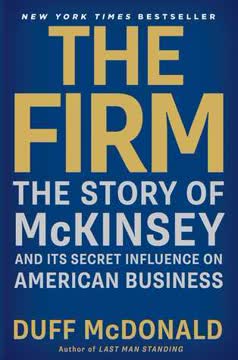
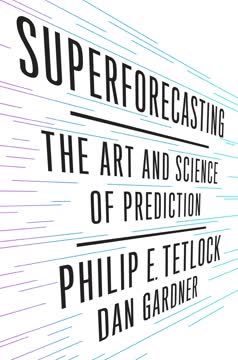
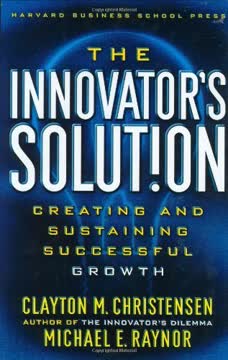


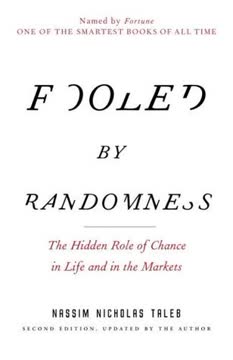
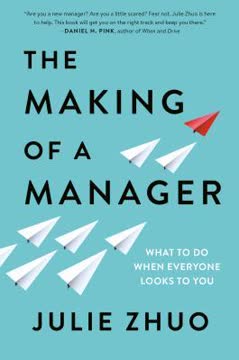
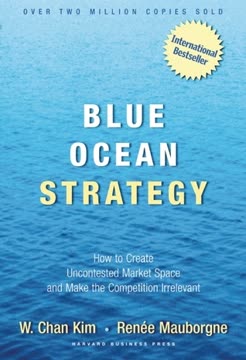

Download PDF
Download EPUB
.epub digital book format is ideal for reading ebooks on phones, tablets, and e-readers.




